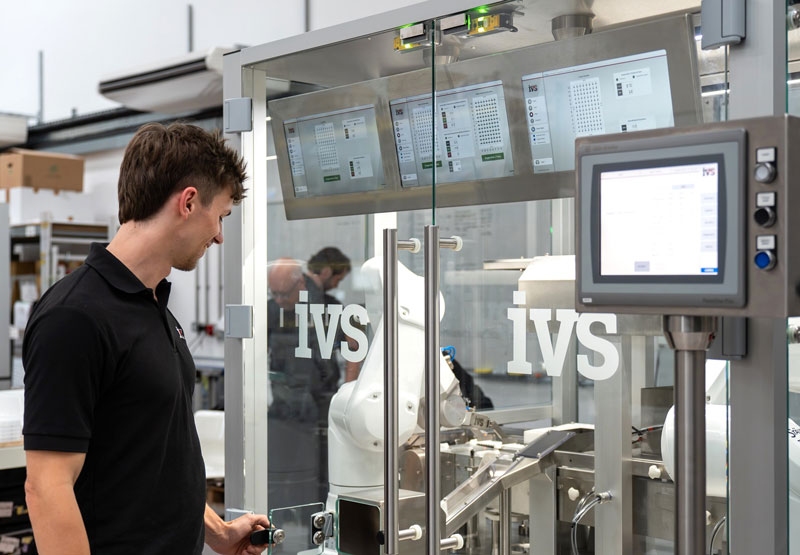Artificial Intelligence (AI) machine vision continues to develop, and using AI deep learning (DL) in automated machine vision inspection has become a valid option in those applications where clear trends, learning, and data are available for process inspection. We continue to see strong growth in the use of AI vision systems. But at what point is a decision made on which machine vision process is best for the application deployment, and when should you boost your machine vision inspection to include an element of 100% AI deep learning inspection? And how do you improve and continue to turbo-charge your AI inspection.
Let’s drill down on what we need to apply AI machine vision. To capture training data, we need a consistent setup with known samples to capture a whole series of images. High-resolution images can capture more details, which can significantly improve the accuracy of the vision system. We need images for training the AI classifier engine, images to test the classifier within the training process, and finally, a set of unseen images to confirm the trained classifier is working as it should be. Some applications are naturally more akin to AI machine vision – such as surface inspection, surface anomalies, or subtle changes to a product’s appearance.
This differs from applications that require specific data to be calculated, such as automated gauging and metrology, where particular parts need to be measured with a vision system to an exact tolerance; this is not an application suited or achievable with AI vision systems (as no such data is available from the AI classifier).
We should also be mindful of how the production systems can be deployed. As AI requires a dataset to train and work with in many cases, the system will need to be installed and images captured from the live system before a determination can be made if AI machine vision is applicable in this case. For example, in medical device and pharmaceutical applications, this is difficult, as the solution needs to be proven and validation paperwork completed before the final installation qualification, and it’s hard to validate an AI model. But in other application areas cameras can be installed and images captured as part of the installation process. Always remember the Pros and Cons of Artificial Intelligence in machine vision.
How can we boost the AI machine vision algorithm?
The first step in boosting the AI machine vision algorithm involves showing new images, more deviations from the normal, and selecting the ability to account for skew, changes in size, and overall deviation of the image. So, it’s important to make the most out of the available data by using data augmentation techniques. This includes rotating, flipping, scaling, and adding noise to the images. Data augmentation increases the diversity of the training data without needing to collect new images, which helps prevent overfitting and improves the generalisation capabilities of the AI model.
It’s important to ensure that your dataset represents the real-world scenarios your machine vision system will encounter. A balanced dataset that includes various angles, lighting conditions, and object variations is crucial for training a robust AI model. Including diverse examples helps avoid biases and makes the system more adaptable and accurate.
It’s important to ensure all elements are handled, so all versions of the reject are known and seen. The classifier will still flag those parts with deviations it has not seen before, but you can boost the AI by providing it with more data to work with. However, there is a trade-off between the time needed to retrain the classifier on a decent GPU PC and the boost you can give to the AI machine vision calculation. It’s best to utilise hardware accelerators like GPUs, TPUs, or FPGAs to speed up the training and inference of the machine vision AI models.
In general, the more data the AI has and the larger the network, the more accurate the analysis will be. Implementing a methodology for continuous integration and deployment (CI/CD) to streamline updating models in production is crucial.
Another way to boost the AI machine vision system is to combine its functionality with traditional machine vision algorithms. We do this often, knowing AI is not a panacea for all application needs. So, use an algorithm, for example, to find specific error states, and then use an AI classification to drill down on ambiguous or hard-to-spot surface/defect deviations.
Continuous Monitoring and Updating of the AI vision system
It’s extremely important to regularly monitor the performance of a machine vision system in production. We generally set up automated systems to track key performance metrics and detect any degradation in performance over time. Continuous monitoring allows timely interventions and updates to maintain the AI model’s high accuracy and reliability. Remember, the environment in which machine vision systems operate can change over time. Periodically update your models with new data to stay accurate and relevant.
Boosting AI machine vision systems involves a holistic approach that includes enhancing data quality, utilising advanced algorithms, ensuring real-time processing capabilities, and implementing robust preprocessing and postprocessing techniques. Additionally, focusing on robustness, generalisation, and continuous monitoring ensures that the system remains accurate and reliable. By following these strategies, you can significantly improve and boost the performance and applicability of your AI machine vision systems, unlocking their full potential across many industry sectors and strengthening their use in industrial automation.
